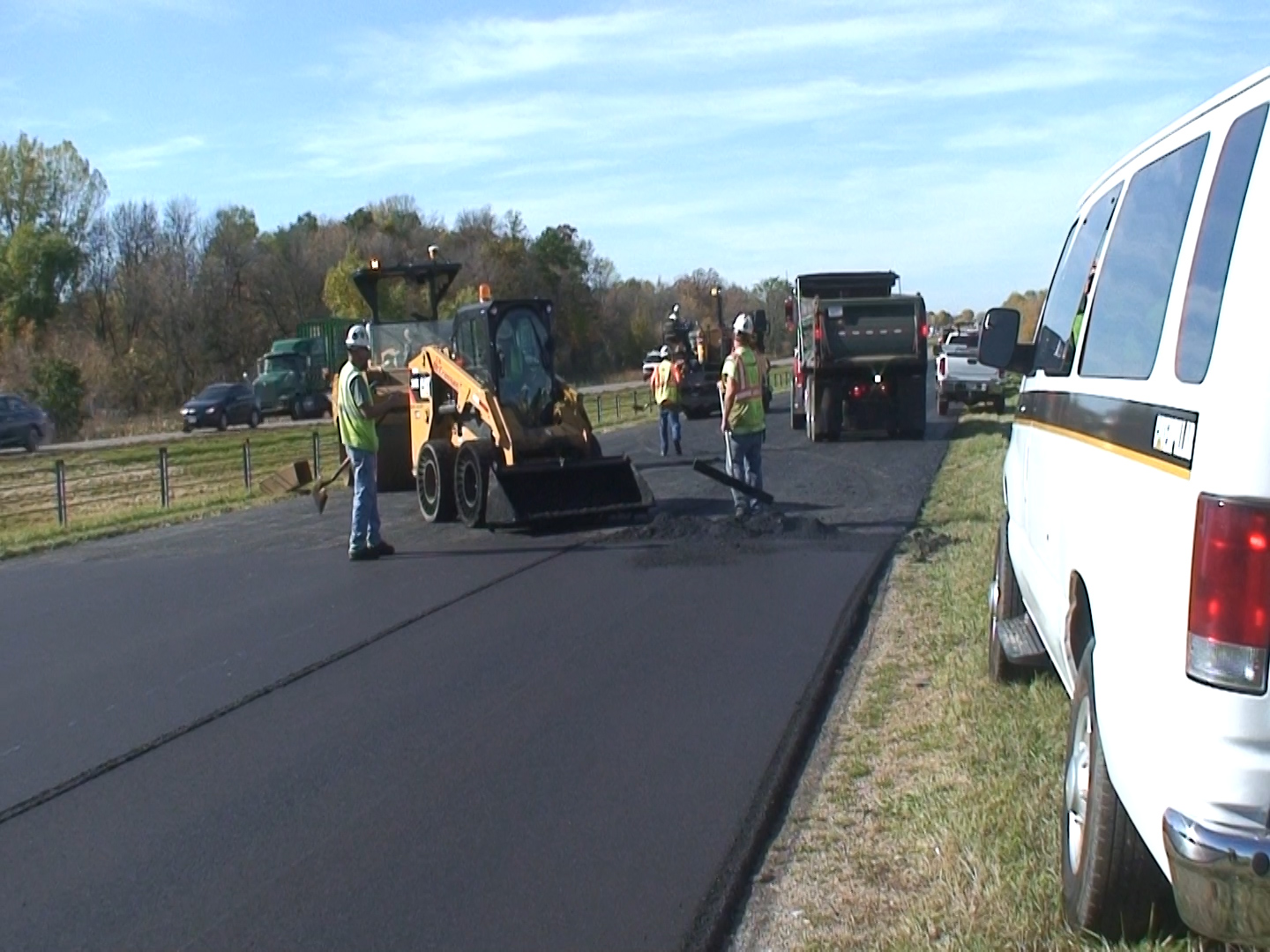MnROAD | NRRA | Structure & Teams | Flexible Team
Developing Best Practices for Rehabilitation of Concrete with Hot Mix Asphalt (HMA) Overlays Related to Density and Reflective Cracking
Status: Complete
Project summary
Asphalt overlays are commonly used to rehabilitate deteriorated PCC pavements; however, mechanically or thermally-driven movements at joints and cracks in the underlying pavement usually lead to the development of reflective cracks in the overlay. The formation and propagation of reflection cracking is controlled by the mechanical properties of the asphalt and the condition of the overlaid pavement. Current state of practice for asphalt overlay design is policy oriented and lacking engineered design approach. There is need for establishing state of practice in design of overlays as well as for assessment of PCC pavement condition and recommending improvements to existing pavement prior to overlay construction. Objective of the proposed study is to develop a simple decision tree based tool for selecting suitable asphalt mixtures and overlay designs to prolong overlay lives by lowering reflective cracking and improving in-situ density. This research will leverage current NRRA effort of constructing, instrumenting and monitoring twelve MnROAD test sections, laboratory performance tests on asphalt mixtures from the test sections, and past field performance data. Proposed tool will incorporate field performance data, performance modelling, and life cycle cost analysis to develop best practices for rehabilitation of PCC with asphalt overlays.
Project tasks/status
Original Need Statement: Developing Best Practices for Rehabilitation of Concrete with Hot Mix Asphalt (HMA) Overlays related to Density and Reflective Cracking (DOC), June 14, 2017
Task 1: Literature review
- Deliverable: Literature Review (PDF), June 2018
Task 2: Gathering past performance data and laboratory testing
- Deliverable: Task 2 memo (PDF), revised August 2019
Task 3: Mechanistic analysis of HMA overlays
- Deliverable: Mechanistic analysis (PDF), February 2020
Task 4: Asphalt density evolution over time
- Deliverable: Task 4 report (PDF), revised May 2020
Task 5: Developing life and performance curves for asphalt overlays and analysis of the performance monitoring completed by MnROAD staff
- Deliverable: Task 5 report (PDF), 11/2020
Task 6: Establish state of the practice for PCC condition
- Deliverable: Task 6 report (PDF), 2/8/2021
Task 7: Establishment of state of the practice for HMA mixtures and their effects on reflective cracking
Task 8: Compile report, technical advisory panel review, and revisions
Task 9: Editorial review and publication of final report
- Deliverable: Final report
Task 10: Out-of-state travel
Project team
Principal Investigator(s): Eshan V. Dave, University of New Hampshire
Technical Liaison: Shongtao Dai, MnDOT
Project Technical Advisory Panel (TAP)
- Tim Andersen, MnDOT
- James Bittmann, MnDOT
- Cody Brand, MnDOT
- Brandon Brever, MAPA
- Tom Burnham, MnDOT
- Andy Cascione, Flint Hills
- Shongtao Dai, MnDOT
- Chris Dulian. MnDOT
- John Garrity, MnDOT
- Jerry Geib, MnDOT
- Ed Johnson, MnDOT
- Kevin Kennedy, Michigan DOT
- Daniel Oesch, MoDOT
- Barry Paye, WisDOT
- Randy West, NCAT
- Charles Wienrank, Illinois DOT
- Zhanping You, MTU
Related materials
- AAPT 2019 Meeting Poster: Comparison of Laboratory Performance Tests with In-situ Performance Data for Reflective Cracking Evaluation (PDF) (Haslett, Univ. of New Hampshire)
- Developing Best Practices for Rehabilitation of Concrete with Hot Mix Asphalt (HMA) Overlays related to Density and Reflective Cracking (DOC), 6/14/2017
- Used to combine - HMA Overlay and Rehab of Concrete (DOC), 2/22/2017
- Used to combine - Methods of Enhancing Compaction (DOC), 2/17/2017
- Video showing construction of the cells, Oct. 17
- Updates during Flexible Team Meeting, June 3
- Research Pays Off webinar presentation, June 2020
- TAP meeting video recording, 6/25/2020
- TAP meeting notes (PDF), 11/18/2020
- Quarterly Reports:
